Aston Martin, Formula One and the $135mn question
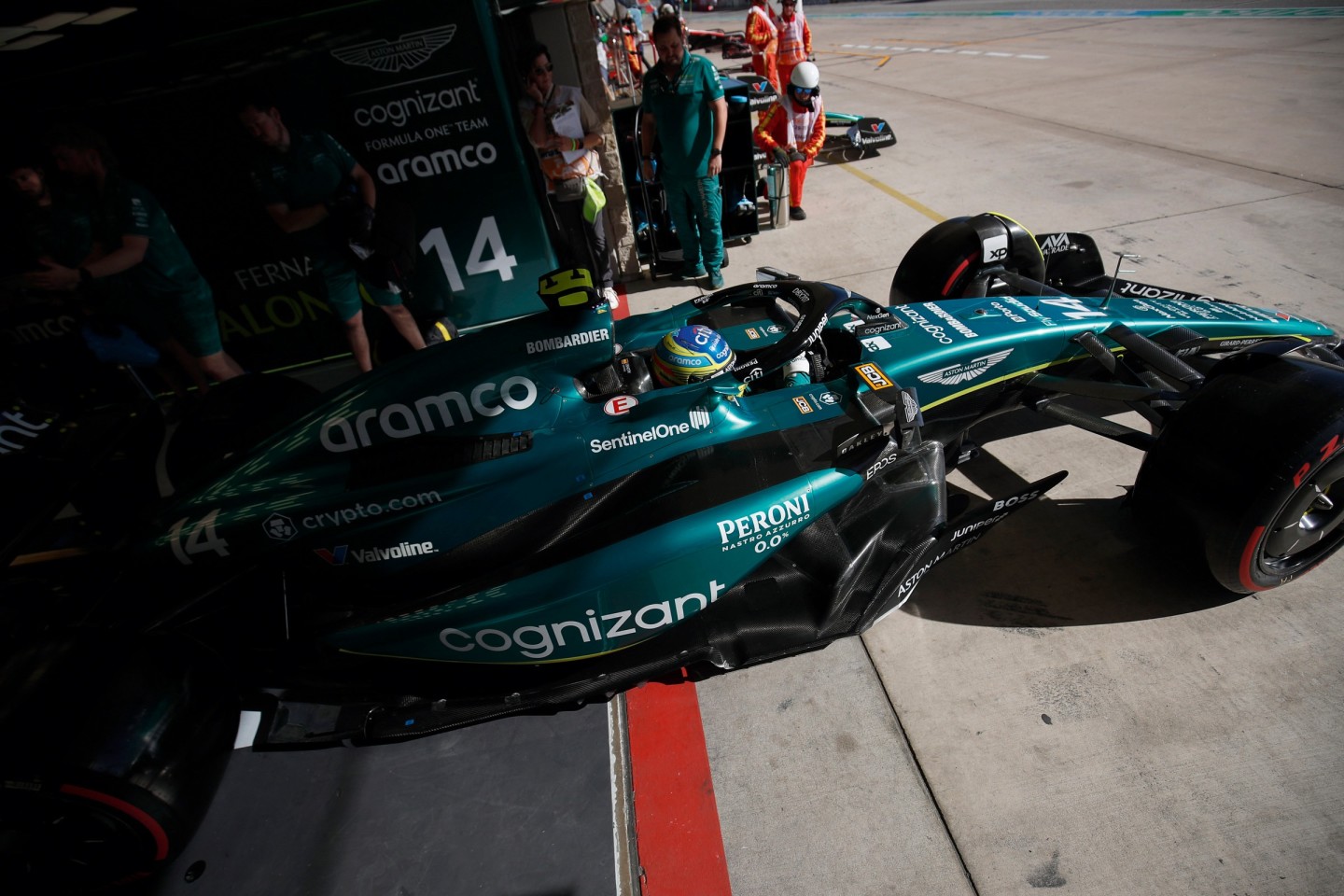
Roula Khalaf, Editor of the FT, selects her favourite stories in this weekly newsletter.
There is a moment during my lap of the Monza track when the Aston Martin DBX707 I am in is moving so fast it feels like we are about to launch into the air. I am here road testing the carmaker’s SUV, G-force pressing me into the passenger seat as former Portuguese racing driver Bruno Correia guides the car through a chicane and into a long straight. Crowds are already lining sections of the track for the Italian Grand Prix as we rocket past at 140mph, rising to 150 and then 165, speeds simultaneously terrifying and exhilarating. We power into another turn, braking sharply, before Correia floors it again. Gripping the armrest, I remember to exhale.
Hours later, Aston Martin will contest the Monza Grand Prix alongside Ferrari, Mercedes, McLaren, Red Bull Racing and the other Formula One teams in motorsport’s most elite competition. Aston Martin’s name only returned to F1 recently under Lawrence Stroll, a Canadian billionaire, following a six-decade hiatus. He first acquired an F1 team in 2018, rebadging it Aston Martin three years later when he led a £500mn bailout of the luxury-car maker with a promise to restore its reputation for high performance. Stroll’s hope is that his F1 team’s technology and aerodynamic expertise can be used in the design and construction of a new generation of Aston Martin road cars. A racing nut, he also wants to give Ferrari, Red Bull and the rest a run for their money.
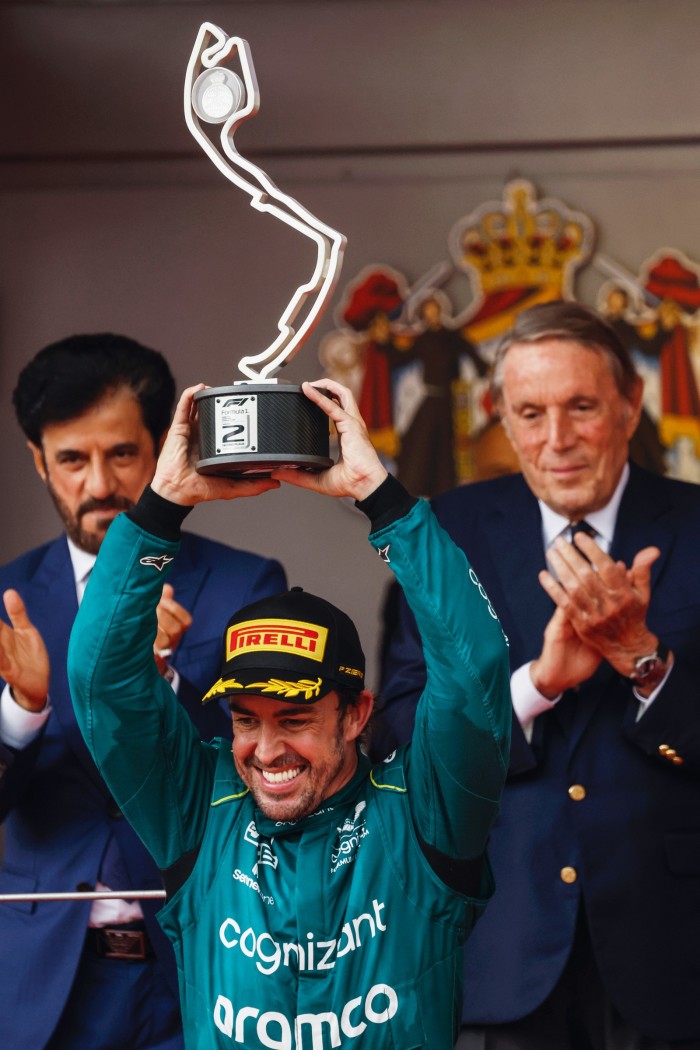
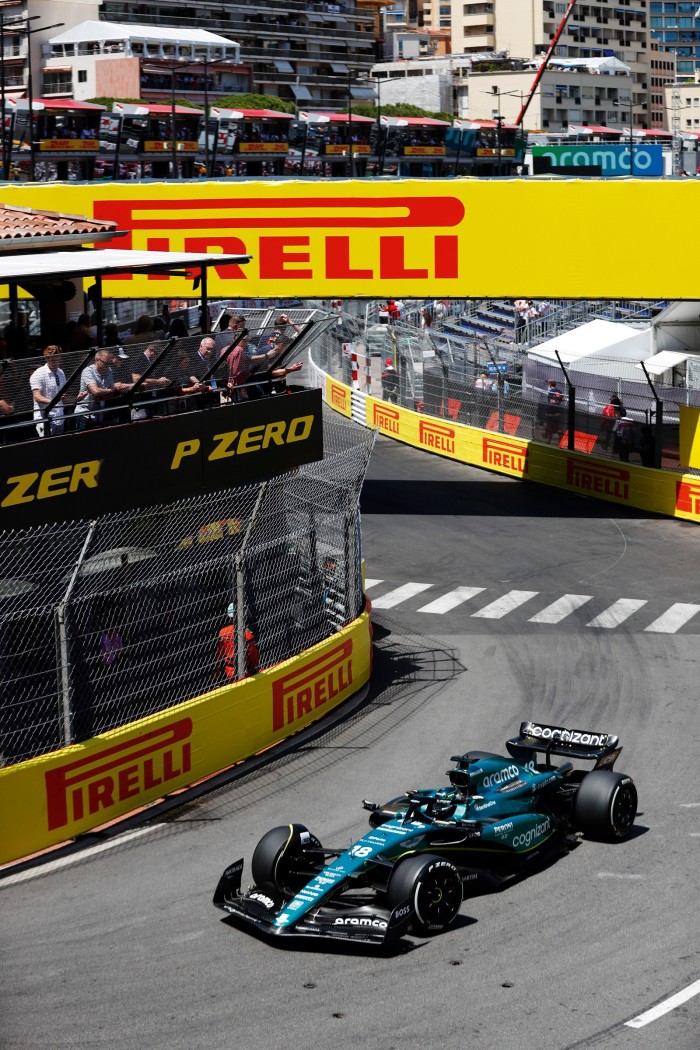
With just two more races to go, his team has exceeded expectations thanks to some stellar performances from lead driver Fernando Alonso, an F1 veteran. At the time of writing he was fourth in the drivers’ championship behind Max Verstappen (who clinched the title more than a month before the end of the season), Sergio Perez of Red Bull and Mercedes’ Lewis Hamilton. Yet Aston Martin’s second driver, Lance Stroll, son of owner Lawrence, has struggled: although he is contracted to the team for next season, speculation has swirled that his future may eventually lie elsewhere.
In the team championship, Aston Martin is battling McLaren for fourth spot. Being in the mix among the sport’s biggest names has given the brand exposure and a platform to market its sports cars, such as the Vantage, one of the two safety cars used in F1, and the DBX707, the latest iteration of Aston Martin’s first SUV. The hope is that F1 and all the promotional benefits that come with it (such as the Netflix hit series Drive to Survive, which charts the highs and lows of the racing season) will extend a fan base that already includes James Bond and King Charles III.
But the carmaker is not out of the woods yet. Stroll’s bailout came when the company was close to collapse over its sliding share price and mounting debt pile. The shares have yet to recover and his bet that he can revive the company is a big one. Will it succeed?
F1 offers many benefits for participating manufacturers, with some of the world’s best-known carmakers drawn by the publicity on offer in a global motorsport showcase watched by millions. These benefits go beyond branding. For successful teams, such as Ferrari, the positive association of engineering excellence that comes from on-track success feeds into perceptions of the company’s road cars (which may explain why Renault recently rebadged its F1 team Alpine after its sports-car brand).
F1 is not cheap, with teams allowed to spend up to $135mn on parts, engineering and transportation under a strict budget cap. Plenty of investment is also needed. At Aston Martin’s racing business, revenues for 2022 rose to £188mn from £150mn but it made a loss of nearly £53mn, reflecting the expense of its new design and development campus at Silverstone. Despite the cost, Aston Martin is broadening its racing portfolio, making a return to Le Mans in 2025 with its new Valkyrie “hypercar”.
I meet Stroll, a big bear of a man with a clipped white beard and open-necked shirt, in the team motorhome at Monza. It is more like a three-storey boutique hotel than a motorhome, which is unloaded, assembled then packed up and reassembled every time the great touring F1 circus moves to the next international location. The chairs are upholstered with the same Scottish leather as the interiors of Aston Martin’s cars and the wood-panelled walls have the company’s signature racing-green trim.
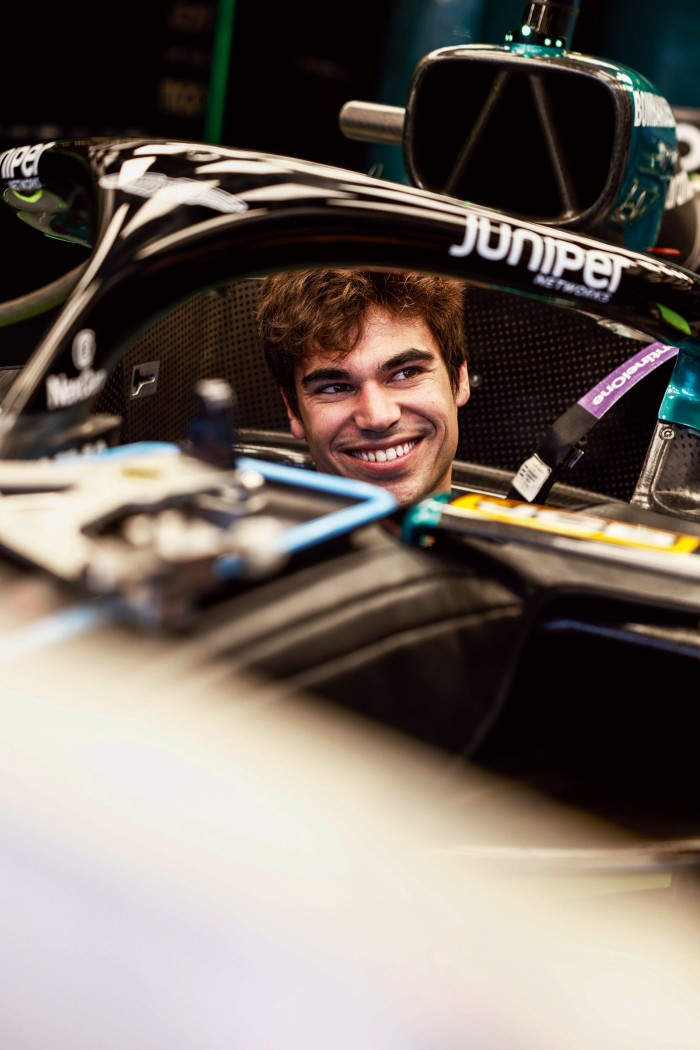
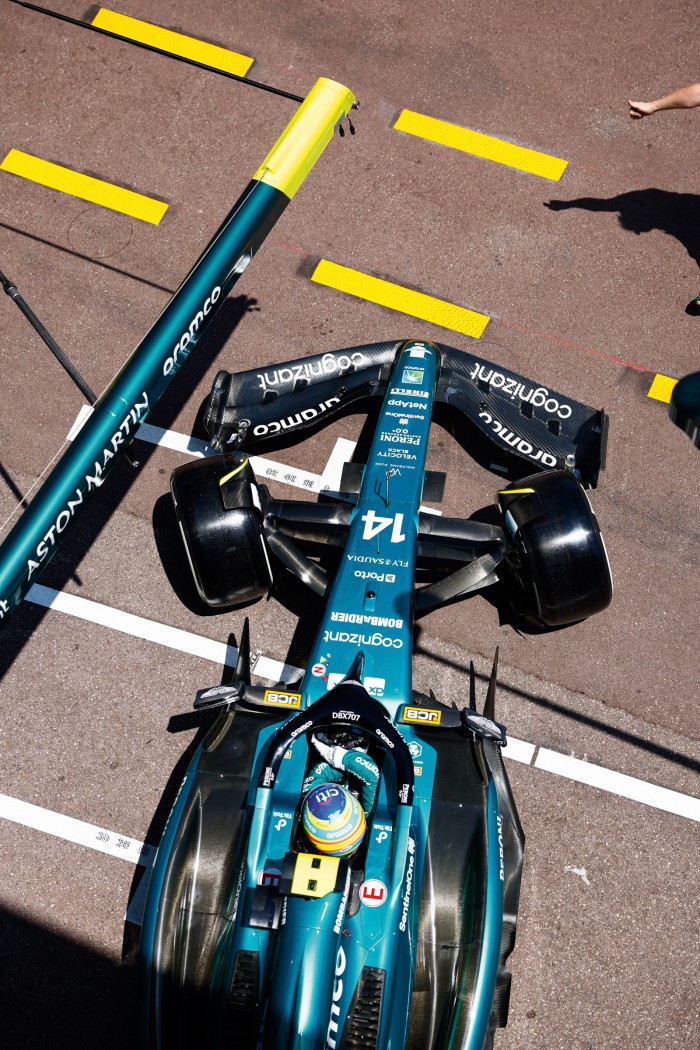
Stroll made his money in fashion brands, bringing Ralph Lauren to Europe and helping turn Tommy Hilfiger and Michael Kors into global brands, amassing sufficient wealth to buy an impressive collection of cars.
“I’ve had more than 100 cars over the past 30 or 40 years,” he tells me, in a soft Canadian accent. “A lot of Ferraris, a lot of Aston Martins. I’ve been a car enthusiast my whole life . . . that’s the passion that got me [to invest in the company]. And by the way . . . I am the Aston Martin customer. So I understood the deficiencies in the product, and the ones in the experience that I have now [fixed] through management of the business.” Aston Martin is, he says, “the greatest British sports-car company, making the most beautiful cars”.
He acknowledges that the company was in a worrying condition when he led the £500mn bailout in 2020: two years earlier Aston Martin had suffered the ignominy of a disastrous London IPO, with shares plunging from the 1900p offer price in the months that followed. In the past six months they have bounced between 200p and 400p.
“This was a troubled business that had not aligned sales, demand and production, which is 101 in building a luxury company,” he says. There has, he says, “been some heavy lifting” required in both the car company and the F1 team.
Stroll has expanded the team’s headcount from just over 400 to 800 since taking control five years ago. He has also invested in a 400,000 sq ft state-of-the-art campus at Silverstone, which includes a new wind tunnel, crucial for aerodynamic testing and development. Wind tunnels “are as rare as rocking-horse shit”, says Marek Reichman, Aston Martin’s chief creative officer. “It’s 25 years since someone last built one in F1.”
At the car company, drastic action has been undertaken: when Stroll led his bailout, Aston Martin was making more vehicles each year than it was able to sell. “We stopped production for a whole year, which was very expensive. People thought I’d lost my mind but it was the smartest thing we could do to align demand with supply.” It was, he says, “the first step towards acting like a true luxury company”.
None of the moves has been cheap. The new F1 team campus at Silverstone cost an estimated £150mn-£200mn — and new shareholders have also come into the carmaking arm, providing much-needed funds. Saudi Arabia’s Public Investment Fund became the second-largest investor in Aston Martin last year. And in May, Geely, the Chinese carmaker that has tried to buy the company several times previously (it lost out to Stroll’s consortium in 2020), doubled its stake to 17 per cent.
Stroll has remained focused on his plan to reshape Aston Martin. After the construction of the campus, the launch of the DBX707 was the next milestone. “No other SUV has vehicle-driving dynamics that come close to it,” he says. One of his other big moves was the hiring of a new management team. In came several longstanding executives from Ferrari, including CEO Amadeo Felisa, Marco Mattiacci, Ferrari’s former US head, and Renato Bisignani, its former head of marketing. Stroll knows Ferrari well, having once been one of the lead importers of the cars into Canada. The Italian company is, he says, “the best business-model case of a small-volume manufacturer that did it well. They were higher performance, but now ours will match theirs; and I think we’re ahead of them in luxury because of our English craftsmanship.”
If Stroll’s plan is to take a leaf out of the Ferrari playbook he won’t get any complaints from Reichman, who has designed Aston Martins for 17 years. Like Stroll, he is a racing nut and recalls with fondness going to watch the British Grand Prix as a child, when the car engines screamed louder and he left “with my ears bleeding”.
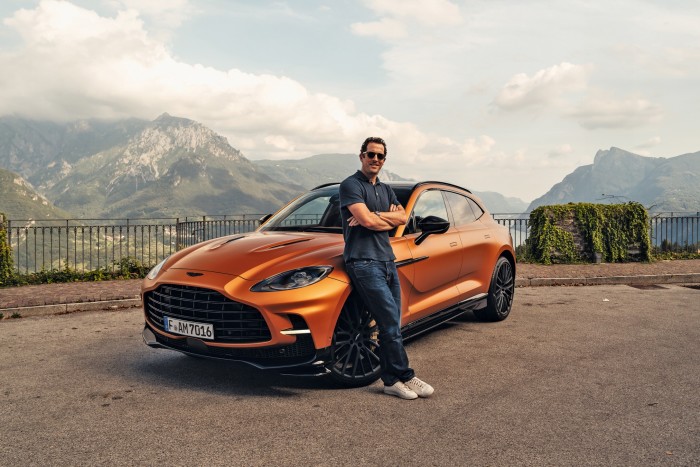
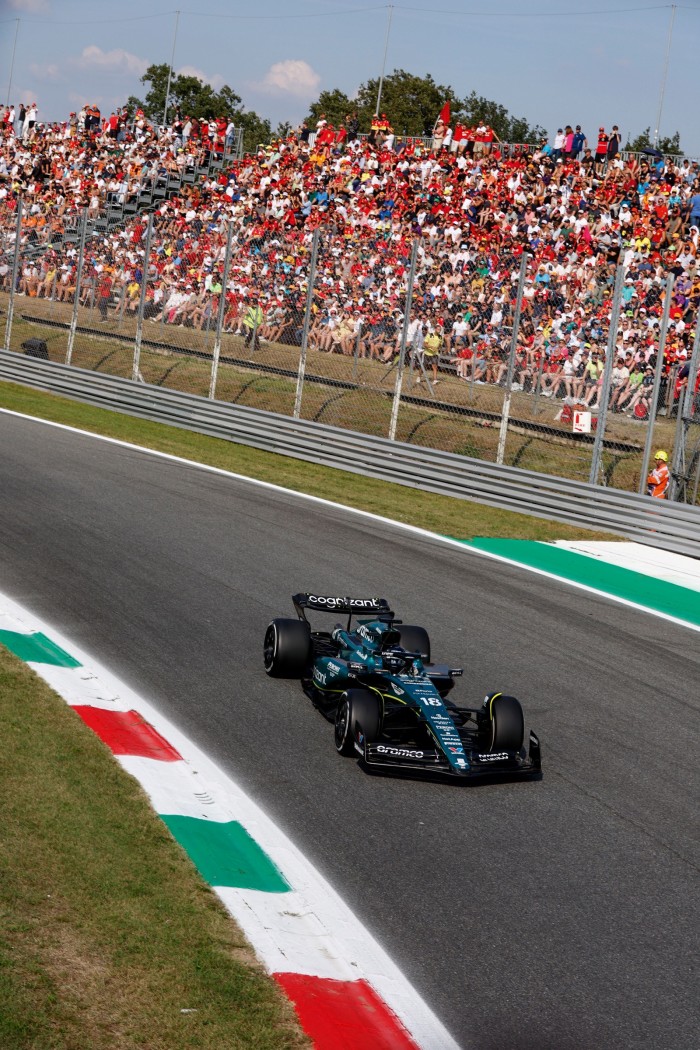
Reichman is a big figure in auto design, not just because he stands six foot five in his socks. As a student, he attended the Royal College of Art and has a clear design philosophy, talking about the application of the “golden ratio” — found in nature, art and architecture — in auto design. Like the Mona Lisa’s face and the human body, the Aston Martin DB9 has the 1.618 ratio governing the relationship between height, width and length.
Reichman is revered by petrolheads: Gordon Ramsay, an Aston Martin fan and owner, who recently filmed a TikTok clip using a spin in a Valkyrie to heat a grilled cheese sandwich on its engine, is also at the Italian Grand Prix in Monza. He grabs Reichman for a chat as we leave the track, as does drum ’n’ bass DJ Goldie when we run into him at the airport.
Reichman has stuck with the company through a period in which the company’s fortunes have swung wildly. “I’ve stayed through good times and bad times and I’ve always thought the best was just around the corner,” he tells me. He says he is genuinely optimistic about Stroll’s ownership and plans to inject F1 knowhow into the car company. The racing team and car group are separate entities “but we are linked by a common owner and the benefits are huge . . . we’re as close to a Ferrari or a McLaren as you could get”.
This is why its new wind tunnel is a big deal. “It’s a really important factor in what we do.” It is also F1 technology that the car company can learn from. Indeed, Reichman says that knowledge has already informed the development of its new Valhalla car, due for release next year. “With the engine, exhaust systems, air flow, structural analysis . . . what we learned with the F1 team directly applies to Valhalla.”
Stroll has more plans. The company recently opened a flagship store on the corner of 57th and Park Avenue in Manhattan, where prospective buyers can order cars to their own specification. Similar outlets are being explored in London on Berkeley Square, and in Japan and China.
“I come from the fashion industry,” he says. “It used to be that all of us sold to department stores. Designers didn’t have their own stores, but that has transformed over the past 30 years. We’re taking a page out of that.”
Will it work? Thanks to F1, the company has a new audience and fans who don’t only associate its cars with James Bond. Its racing team has punched above its weight and if the car designed at its new facility for next year’s F1 season is faster, then who knows what next season will bring. A successful F1 team that fuels a revamped, high-performance car company? If Ferrari can do it, maybe Britain’s Aston Martin can as well.
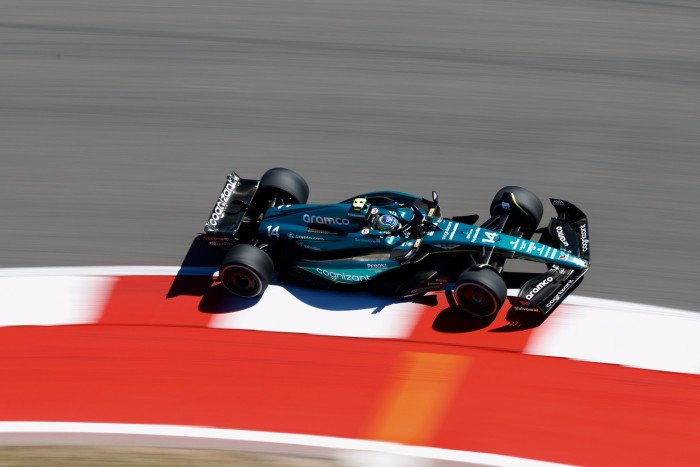
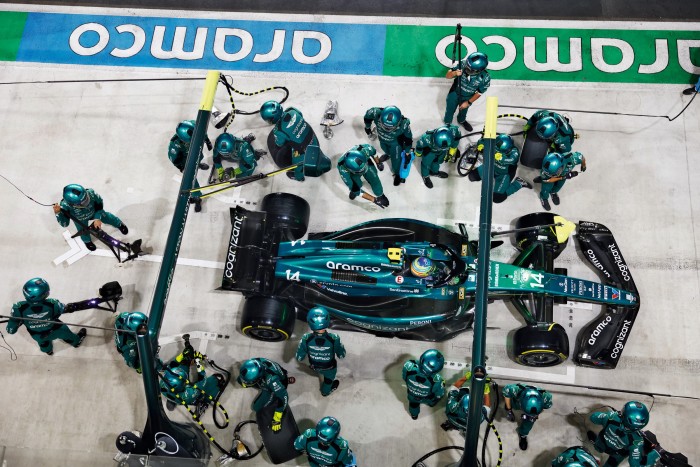
Comments